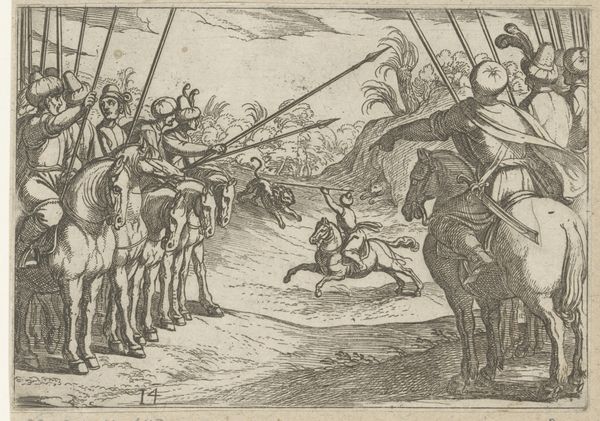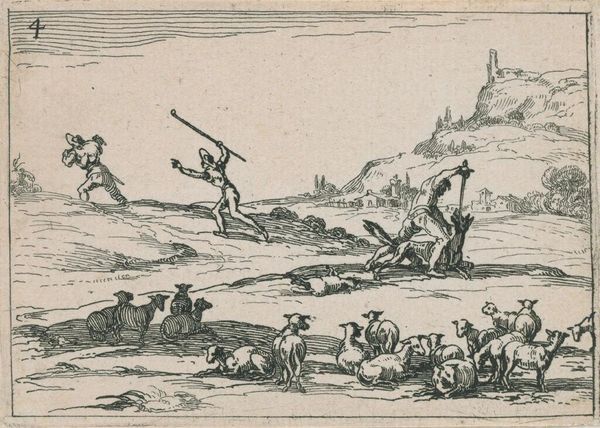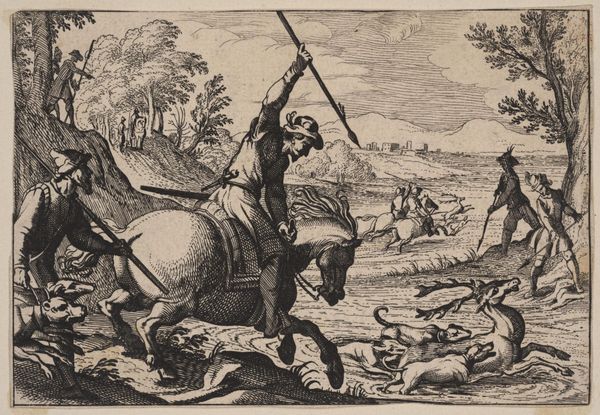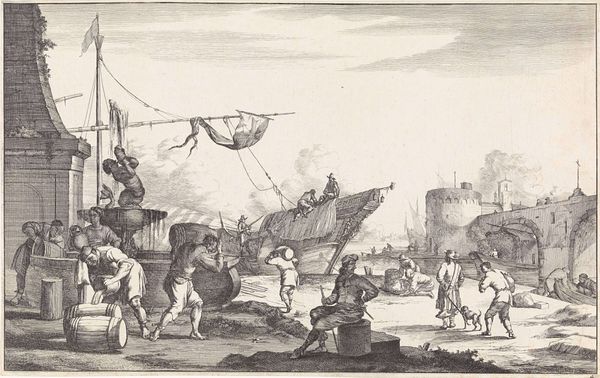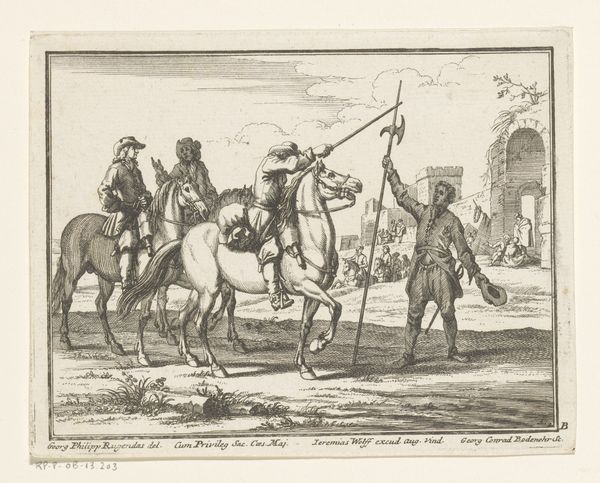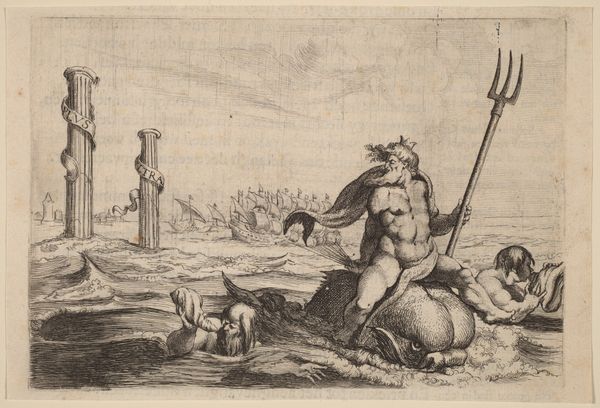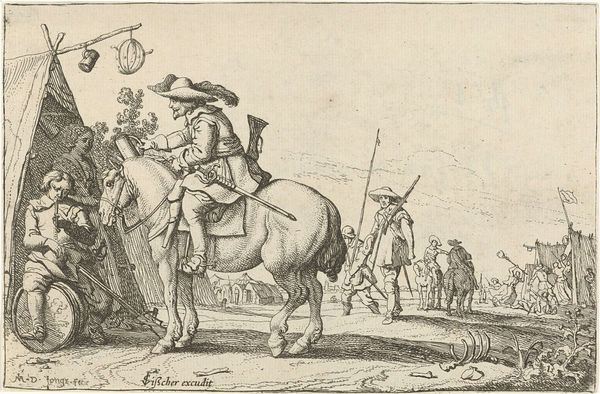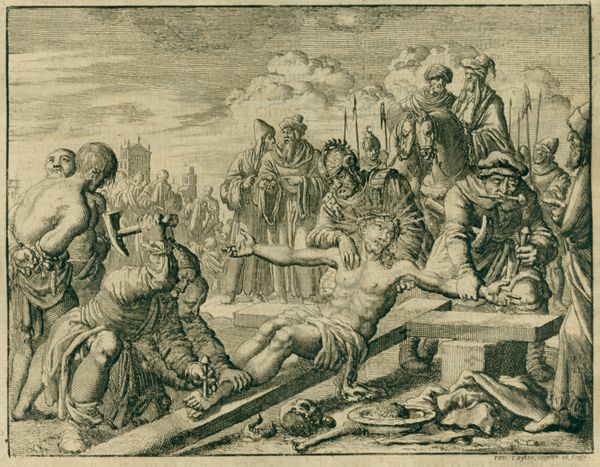
Plate 9: a chariot carrying a cannon to left, soldiers in center playing cards, from 'Troops, cannons, and attacks on towns' (Dessins de quelques conduites de troupes, canons, et ataques de villes) 1635 - 1645
0:00
0:00
drawing, print, etching
#
drawing
#
baroque
# print
#
etching
#
landscape
#
soldier
#
history-painting
Dimensions: Sheet: 2 7/16 x 5 1/16 in. (6.2 x 12.8 cm)
Copyright: Public Domain
Editor: This etching, "Plate 9: a chariot carrying a cannon to left, soldiers in center playing cards..." made sometime between 1635 and 1645 by Stefano della Bella, offers a slice-of-life moment amid a military campaign. The men seem distracted, almost bored. How do you read this depiction of soldiery, particularly given the medium? Curator: This etching provides a valuable material document, hinting at the daily life and labor conditions of soldiers within a very specific historical and social context. Della Bella has carefully considered the landscape of war, emphasizing the tools, equipment, and personnel required to engage in warfare in the 17th century. Editor: What do you mean by 'material document'? Curator: The etching, in its very making, speaks of the labor involved in both warfare and artistic production. We see the cannon itself – the cost of its construction, the resources consumed in its creation. Think about the copperplate, the ink, the paper: all testify to a network of skilled laborers and global resource extraction supporting both art and war. Editor: So the print isn’t just about what’s *pictured,* but also about what it *took* to picture it? Curator: Precisely. Look at the playing cards – a form of leisure made possible by particular systems of trade and production. This seemingly simple activity embodies a complex web of social relations, reflecting both the availability of these goods and the soldiers' position within the socio-economic structure of the time. And consider the distribution of the print itself: another layer of labor and consumption extending the reach of this "military landscape" to a broader audience. Editor: I hadn’t considered the print *as* a material object in that way, but now I'm seeing connections everywhere! It definitely adds another layer to the story being told here.
Comments
No comments
Be the first to comment and join the conversation on the ultimate creative platform.
